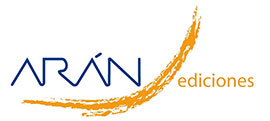Trabajo Original
NHANES data analysis of the cardiometabolic index in relation to lumbar spine bone mineral density
Rui Zhu, Chao-Ren Deng, Shao-Ping Wu
 Número de descargas:
2588
Número de descargas:
2588
 Número de visitas:
2208
Número de visitas:
2208
 Citas:
0
Citas:
0
Compártelo:
Objective: to investigate the correlation between cardiometabolic index (CMI) and lumbar spine bone mineral density (LSBMD) in U.S. adults. Methods: the study selected eligible participants from the National Health and Nutrition Examination Survey (NHANES) database from 2011 to 2018. After adjusting for age, gender, race/ethnicity, body mass index (BMI), liver function markers, kidney function markers, blood routine indicators, metabolic markers, and chronic disease status, a logistic regression model combined with a restricted cubic spline model, smooth curve fitting, and threshold effect analysis was used to examine the association between CMI and LSBMD. Subgroup analysis was performed to verify the robustness of the results. Result: among the 3,885 participants, for each unit increase in CMI, LSBMD decreased by 0.011 g/cm². Additionally, a turning point was identified at CMI = 0.797. When CMI was below 0.797, LSBMD decreased as CMI increased, showing a strong negative correlation (β = -0.077, 95 % CI: -0.097 to -0.058, p < 0.001). However, beyond this threshold, the relationship between CMI and LSBMD was no longer significant. Subgroup analysis revealed that the negative correlation between CMI and BMD was consistent across most subgroups (such as gender, BMI, hypertension, and high cholesterol), but instability was observed in subgroups such as individuals aged 51-59, Mexican Americans, non-Hispanic Blacks, and those with diabetes. Conclusion: there exists a non-linear inverse correlation with CMI and LSBMD, showing that CMI could be a potential contributing factor for decreased bone mineral density, with a more pronounced effect within a specific range.
Palabras Clave: Cardiometabolic index (CMI). Lumbar spine bone mineral density (LSBMD). Large sample cross-sectional study. NHANES.
Artículos Relacionados:
Trabajo Original: Vitamin D concentrations among older adults according to physical disability status: NHANES 2007-2014
Carlos H. Orces
Trabajo Original: The relationship between weight change history and 25(OH)D concentrations in adults
Carlos H. Orces
Trabajo Original: Association of serum 25-hydroxyvitamin D concentrations and myopia in the U.S. Population — Results from the NHANES 2001-2008
Huan Wang , RuiHua Wei , Hua Yan
Trabajo Original: Association between the dietary inflammatory index and pelvic inflammatory disease - Findings from the NHANES data (2015-2018)
Juanjuan Ma , Panwei Hu , Qinhua Zhang , Jian Pei
Trabajo Original: Adherence to an antioxidant diet is associated with reduced risk of epilepsy among American adults - NHANES 2013-2018
Yanmei Wang , Wen Chai , Qin Kang , Yuehong Wan
Trabajo Original: A prospective study of regular milk drinking and the risk of all-cause and cause-specific mortality in U.S. adults: findings from the NHANES 2003-2008
Fei Zhao , Liyan Zhu , Ye Lu , Hongwei Xia , Shengchao Zhang , Ping Zhang
Trabajo Original: Dietary plant protein intake alleviates the adverse effect of sedentary behavior on chronic kidney disease incidence
Zuoxun Xia , Ye Xiong
Trabajo Original: Nonlinear dose-response relationship between dietary niacin intake and osteoporosis in U.S. adults over 50 years of age - A cross-sectional study of the 2007-2018 National Health and Nutrition Examination Survey (NHANES)
Jia Bai , Botao Gao , Jinyang An , Lingling Li , Yangyang Zhang , Xinsai Li , Shuyun Li , Haihong Lv
Trabajo Original: Association between Life’s Essential 8 scale and liver fibrosis - NHANES 2017-2018
Fang Qi , Jiahui Yang
Trabajo Original: Fat content determines the association between milk consumption and cardiovascular disease - Analysis of the NHANES from 2003-2018
Jiacan Wu , Yuan Yang , Xuanrui Lin , Guanghong Tao , Xiaoqin Li , Hua Xiao
Trabajo Original: Specific dietary micronutrients are causally associated with arthritis subtypes - Results from the NHANES 2015-2018 and Mendelian randomization study
Feng Cheng , Yingjia Zhu , Xiaojing Zhang , Fei Xia
Trabajo Original: Association of the Alternative Healthy Eating Index with osteoporosis and muscle mass among U.S. adults aged 50 years and older
Hongfei Liu , Xinghai Yue , Xiangran Cui , Wei Wei , Shixuan Wang
Artículos más populares
Revisión: Inteligencia artificial generativa ChatGPT en nutrición clínica: avances y desafíos
ChatGPT y otras herramientas de inteligencia artif...
Revisión: Suplementación con micronutrientes y sus beneficios: ¿por qué y cuándo?
Introducción: los micronutrientes participan en la...
-
Licencia creative commons: Open Access bajo la licencia Creative Commons 4.0 CC BY-NC-SA
https://creativecommons.org/licenses/by-nc-sa/4.0/legalcode




